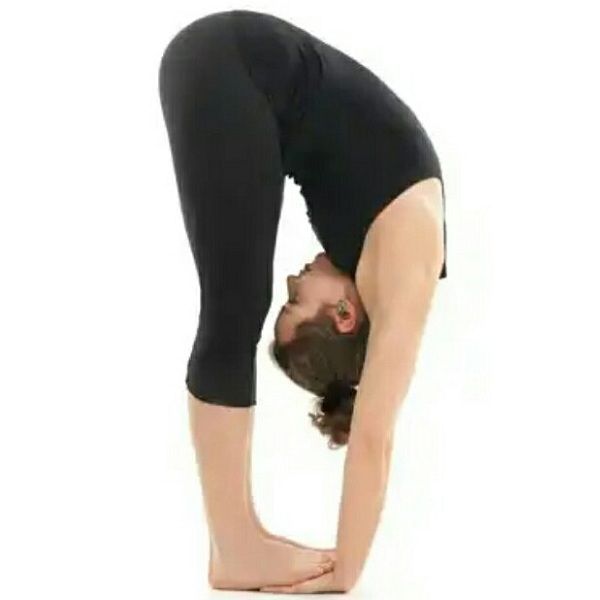ExploringPadahastasana: A Journey to Hand-to-Foot Pose:
In the bustling world we inhabit, finding moments of stillness and connection with our bodies can feel like a luxury. Yet, amidst the chaos, there exists a timeless practice that beckons us to pause, breathe, and delve deep into the realm of physical and mental well-being. Yoga, with its rich tapestry of poses, offers a sanctuary for seekers of inner peace and outer strength. Among these poses, Padahastasana, or Hand-to-Foot Pose, stands as a gateway to harmony between mind, body, and spirit.

The Essence of Padahastasana:
Padahastasana is a forward bend that requires flexibility, balance, and focus. In Sanskrit, “Pada” means foot, and “Hasta” means hand, while “Asana” denotes a posture or pose. Together, Padahastasana invites practitioners to touch their toes while keeping the legs straight and the spine elongated. While the physical benefits are numerous, the true essence of this pose lies in its ability to cultivate mindfulness and inner awareness.
The Journey into Padahastasana:
Embarking on the journey into Padahastasana requires patience, dedication, and a willingness to listen to the body. As with any yoga practice, it is crucial to approach this pose with mindfulness and respect for personal limits. Here’s how to begin:
1. Warm-Up: Start with gentle warm-up poses to awaken the body, focusing on stretching the hamstrings, calves, and spine. Sun Salutations (Surya Namaskar) can be an excellent way to prepare the body for deeper stretches.
2. Mountain Pose (Tadasana): Stand tall with feet hip-width apart, grounding through the soles of the feet. Engage the quadriceps, lift the kneecaps, and lengthen the spine.
3. Forward Fold (Uttanasana): Exhale as you hinge at the hips, folding forward from the waist. Keep the spine long and micro-bend the knees if needed to protect the lower back.
4. Hand-to-Foot Pose (Padahastasana): From Uttanasana, slide the palms under the feet, bringing the toes to touch the wrists. Keep the legs straight and the weight evenly distributed between the feet.
5. Breathing and Alignment: In Padahastasana, focus on maintaining steady breath awareness. With each inhalation, lengthen the spine, and with each exhalation, deepen the stretch by gently pulling the torso closer to the thighs.
Benefits of Padahastasana:
The benefits of Padahastasana extend beyond the physical realm, encompassing mental and emotional well-being:
1. Stretch and Flexibility: Padahastasana stretches the entire back body, including the hamstrings, calves, spine, and shoulders, promoting flexibility and suppleness.
2. Improved Circulation: The inversion aspect of Padahastasana encourages blood flow to the brain, revitalizing the mind and boosting energy levels.
3. Calm and Focus: The meditative quality of Padahastasana helps calm the mind, alleviate stress, and enhance concentration.
4. Digestive Health: The compression of the abdomen in this pose stimulates digestion and can relieve symptoms of bloating and indigestion.
Embracing the Journey:
As with any yoga practice, Padahastasana is not about achieving a perfect pose but rather about the journey of self-discovery and self-care. It’s essential to honor the body’s limitations, embracing both the challenges and the moments of ease. With consistent practice and gentle persistence, Padahastasana can become a source of strength, serenity, and connection with the self.
In the fast-paced modern world, the practice of Padahastasana serves as a gentle reminder to slow down, breathe deeply, and journey inward. Through the union of breath, movement, and mindfulness, we uncover the profound wisdom that resides within, guiding us towards a life of balance, harmony, and radiant well-being.